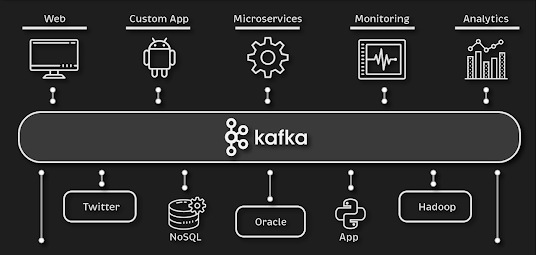This is another post of my tibco tutorial series , if you want to read more about tibco rv or tibco ems please read there. in this post I am sharing you great tool to solve tibco rv related problems and a great interface to analyze your Tibco RVD activities. until i know this I mostly used netstat command to figure out which topics are subscribed by my tibco RVD but after since I know about this I had helped me a lot.
Every host where tibco rvd is running expose on HTTP interface using that we can get many useful information e.g
--- How many clients are connecting to a particular service
--- Which services has been subscribed by rvd
--- Which hosts are connected to this rvd (using remote daemon).
--- How much data has been sent to received
--- Viewing tibco log to figure out any tibco issue.
--- How many subject a particular service is using and what are those etc.
to check on which HTTP port your rvd is publishing information do this in your linux/windows host where rvd is running
ps -ef | grep rvd
this will show rvd process with parameters used for starting "-http 7582" shows that http interface is on port 7582
now just type this in your browser.
http://hostname:7582/
and you can see tibco webpage. I found it most useful tool while troubleshooting tibco rv issue.
Now coming back to the questions I have shared earlier:
How to find how many clients are connecting to a particular service?
You can use the TIBCO RVD's HTTP interface to query the status of a particular service. By sending a request to the appropriate endpoint, you can retrieve information about the number of clients currently connected to that service.
How to find which services have been subscribed by RVD?
Through the HTTP interface, you can access the list of services that RVD is currently subscribed to. This helps in monitoring the services that RVD is actively listening to.
How to find which hosts are connected to this RVD (using remote daemon)?
The HTTP interface can provide a list of connected hosts that are using the remote daemon functionality of RVD. This allows you to monitor the remote connections and their status.
How to find how much data has been sent and received?
The HTTP interface can provide statistics on data sent and received by RVD. This includes information about the volume of data transferred, which is useful for monitoring network traffic and performance.
How to view TIBCO log to figure out any TIBCO issue?
You can access logs through the HTTP interface to troubleshoot TIBCO issues. The logs can provide valuable insights into errors, warnings, and other events that can help diagnose and resolve problems.
How to find how many subjects a particular service is using and what are those?
You can query the HTTP interface to retrieve information about a specific service, including the subjects it is using. This allows you to understand the messaging patterns and dependencies of that service.
Utilizing the HTTP interface of TIBCO RVD for these purposes can greatly enhance monitoring and troubleshooting capabilities, helping ensure the smooth operation of your messaging infrastructure.
What are alternative of TIBCO RV?
TIBCO RV (Rendezvous) was a popular messaging middleware solution many people including me have used for building high-performance, fault-tolerant, and low-latency messaging systems.
However, the technology landscape evolves over time, and alternative messaging solutions may have gained prominence since then. Here are some alternatives to TIBCO RV that you might consider:
1. Apache Kafka
Apache Kafka is a distributed streaming platform that has gained widespread adoption for building real-time data pipelines and event-driven architectures. It is known for its scalability, fault tolerance, and support for high-throughput messaging.
2. RabbitMQ
RabbitMQ is a widely used open-source message broker that supports multiple messaging patterns, including publish/subscribe and request/reply. It's known for its ease of use and reliability.
3. ActiveMQ
Apache ActiveMQ is another open-source message broker that provides messaging capabilities and supports multiple protocols, including JMS (Java Messaging Service) and MQTT.
4. NATS
NATS is an open-source messaging system that is designed for simplicity and high performance. It is suitable for lightweight messaging needs and microservices architectures.
5. Amazon SQS and Amazon SNS
If you are operating in the cloud, Amazon Web Services (AWS) provides managed messaging services like Amazon Simple Queue Service (SQS) for message queuing and Amazon Simple Notification Service (SNS) for publish/subscribe messaging.
6. Google Cloud Pub/Sub
Google Cloud offers a fully managed messaging service called Pub/Sub, which is designed for building scalable, event-driven applications on Google Cloud Platform.
7. Microsoft Azure Service Bus
Azure Service Bus is a messaging service offered by Microsoft Azure that supports both queuing and publish/subscribe patterns, making it suitable for various application scenarios.
8. IBM MQ (formerly IBM WebSphere MQ)
IBM MQ is a mature and reliable messaging middleware solution that provides high-performance message queuing and publish/subscribe capabilities.
It's essential to evaluate your specific requirements, including scalability, reliability, programming language support, and integration capabilities, when choosing an alternative to TIBCO RV.
Additionally, the messaging landscape may have evolved further since I wrote this article years before, so I recommend checking the latest trends and considering your organization's current needs when making a decision.
to read more about tibco rv or tibco ems see my tibco tutorial series

Hello there, My tibrv is not showing HTTP console, I tried to open browser on tibco host and post 7582 but noting appears? When I checked the rvd command in host it shows this
ReplyDeletervd -listen 192.168.12.65:7500 -no-permanent
do I need to restart tibco with --http parameter?